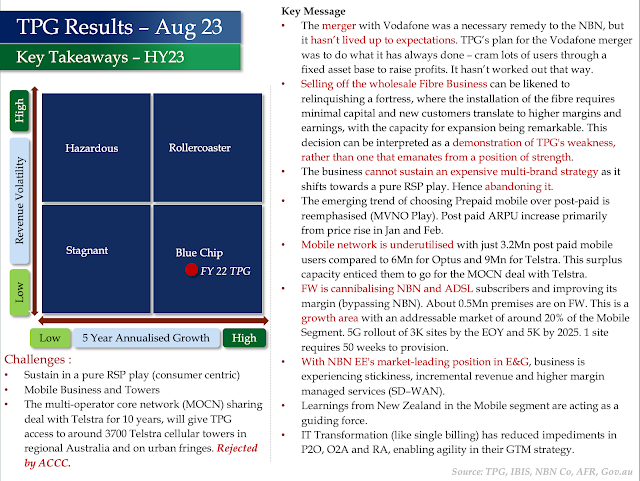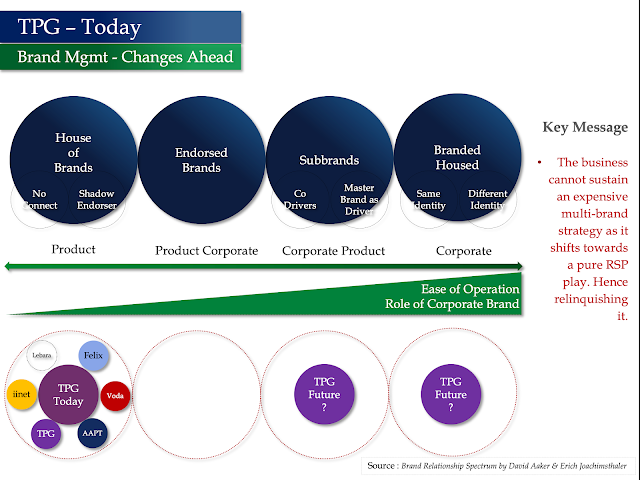Telstra's Dual Strategy: Investor Lens
Telstra's first half FY25 results have delivered a strategic surprise that signals management's growing confidence in the company's financial strength. With a clean 6% increase in underlying earnings, Telstra has not only raised its dividend as expected, but also announced a significant share buyback program. This dual approach to shareholder returns marks a new chapter for a telecommunications giant that has dramatically transformed recently.
Segment Performance: Mobile Leads with World-Class Margins
Mobile dominance continues:
The Mobile division delivered 4% earnings growth, exceeding analyst expectations despite only four months of price increases and disruption from the 3G network shutdown.
Why it matters:
With Mobile (>40% market share) accounting for over 60% of total EBITDA and maintaining an extraordinary 47% margin (among the highest globally), this segment remains Telstra's crown jewel. The division's ability to grow postpaid subscribers by 48k while experiencing minimal disruption from the 3G shutdown demonstrates operational resilience.
InfraCo exceeds expectations:
The fixed infrastructure business grew EBITDA by 7% compared to a 2% expectation, with margins expanding to an impressive 62%.
Why it matters:
InfraCo's outperformance indicates that Telstra's structural separation strategy is yielding results, creating focused business units that can optimise operations independently.
The fixed segment shows dramatic
Improvement: Fixed EBITDA surged 74% year-over-year to $183 million, primarily uplift in CS&B and its digitisation.
Why it matters:
This historically challenged segment is finally showing signs of stabilisation after years of
NBN-related headwinds, contributing to a more balanced business portfolio.
EBITDA Growth and Profitability: Transformation Bears Fruit
Total EBITDA up 6% to $4.28 Bn, with 6/7 business segments showing growth.
Why it matters:
The broad-based growth across multiple segments demonstrates that Telstra's transformation isn't dependent on a single division, creating a more sustainable earnings profile.
Return on invested capital (ROIC) reached 8.0%, supported by strong cost performance.
Why it matters:
This metric indicates that Telstra is deploying capital more efficiently, a key factor for long-term shareholder value creation and a sign of improved management discipline.
Earnings per share grew 6% to 8.9 cents, supporting the dividend increase.
Why it matters:
Consistent EPS growth provides the foundation for sustainable dividend increases without compromising the company's financial position.
Capital Allocation: A New Framework Emerges
Management shifts to cash EPS focus for capital allocation decisions, moving away from traditional accounting EPS.
Why it matters:
This change acknowledges the reality that Telstra's cash flows exceed accounting profits due to non-cash expenses like depreciation on leases, spectrum, and fibre assets.
$750 million share buyback announced, commencing March 12, 2025.
Why it matters:
While some interpret buybacks as a sign management lacks investment opportunities, they can also indicate management believes the stock is undervalued. With Telstra, the buyback likely signals that management sees the current share price as disconnected from the company's intrinsic value, particularly given the stable cash flows from core businesses.
Capital reallocation to growth areas, including $800 million of capex redirected to mobile over the next four years.
Why it matters:
This targeted investment demonstrates that while management is returning capital to shareholders, they're simultaneously investing in Telstra's highest-return business to maintain network leadership.
Cash Flow and Debt Position: Room to Maneuver
Full-year free cash flow guidance of $3.0-3.4 billion implies a free cash flow yield of nearly 4.5%.
Why it matters:
This strong cash flow generation supports both dividends and buybacks while providing flexibility for strategic investments.
Gearing ratio of 2.16x at FY24, with projections to decrease to 2.0x in FY25.
Why it matters:
Telstra maintains headroom under both its own "comfort zone" debt ratio (1.5-2.0x) and rating agency thresholds, providing flexibility for additional capital returns without jeopardising its financial position.
Potential for $2.25 billion in cumulative share buybacks through to FY28 as a base case, according to a leading analyst
Why it matters:
The multi-year buyback capacity indicates sustainable financial strength rather than a one-time return of capital.
Dividend Strategy: Sustainable Growth Ahead
Dividend increased to 9.5c from 9.0c per share, a 6% increase.
Why it matters:
Dividend increases typically support share price appreciation by attracting income-focused investors and signalling management confidence in future cash flows.
Potential for dividend to reach mid-20c range by FY28, limited primarily by franking credit generation.
Why it matters:
This long-term dividend growth trajectory provides investors with visibility into future returns, supporting the investment case for patient shareholders.
Dividends currently exceed EPS, but are supported by superior cash flows.
Why it matters:
This highlights the importance of Telstra's shift to cash EPS for capital allocation decisions, ensuring dividend sustainability despite accounting metrics suggesting otherwise.
Asset Monetisation: Reducing Complexity and Information Asymmetry
Sale of Ventures business completed, with proceeds reflected in the first half cash balance.
Why it matters:
Divesting non-core assets simplifies Telstra's story for investors, reducing the information asymmetry that often leads to valuation discounts for conglomerates.
Foxtel sale in progress, not yet reflected in cash balances.
Why it matters: Beyond the immediate cash proceeds, divesting media assets allows management to focus on core telecommunications infrastructure, where Telstra has sustainable competitive advantages.
Portfolio restructuring continues, with the NAS division identified as a focus area.
Why it matters:
This ongoing portfolio optimisation process suggests management is continuously evaluating where Telstra can create the most value, rather than maintaining legacy businesses for size alone.
Future Growth Catalysts: Beyond the Core
Accenture's partnership to develop AI capabilities, with $700 million investment primarily focused on cost reduction rather than revenue growth.
Why it matters:
This strategic initiative demonstrates management's willingness to invest in emerging technologies with clear ROI metrics, rather than pursuing technology for its own sake.
Intercity fibre rollout progressing, with seven routes under construction and the first two (Sydney-Canberra and Melbourne-Canberra) expected to be ready in late 2025.
Why it matters:
These new routes position Telstra to capitalise on growing demand from hyperscalers and the AI industry, representing a strategic pivot toward higher-growth market segments.
Mobile ARPU expected to benefit from the full-period impact of price increases in 2025.
Why it matters:
This pricing power demonstrates Telstra's dominant market position (>40% market share) and ability to translate network quality into financial returns.
Investment Thesis:
A Transformed Telstra. Telstra has completed a remarkable transformation, evolving from a clumsy giant with unfocused international ambitions to a streamlined, efficient telecommunications infrastructure business. With industry-leading margins in mobile, growing infrastructure returns, and a disciplined approach to capital allocation, today's Telstra offers investors exposure to stable cash flows with modest growth potential.
The combination of dividend growth and share buybacks creates a compelling total return proposition in an uncertain economic environment. While the stock may never generate the same level of excitement as high-growth tech names, its 4.5% free cash flow yield and clear path to higher dividends make it a worthy consideration for income-focused portfolios.
As management continues to monetise non-core assets and reinvest in high-return businesses, Telstra appears well-positioned to deliver sustainable shareholder returns while maintaining the financial flexibility to respond to industry shifts. The upcoming investor day later this year is expected to provide further clarity on Telstra's strategy through 2030, potentially catalysing additional investor interest in this transformed telecommunications leader.
source: AFR, Telstra, WSJ, Reuters, Yahoo Finance










 \
\




